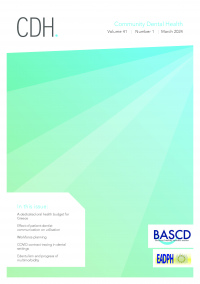December 2014
Associations between schools’ guidelines and pupils’ smoking and sweet consumption
Abstract
Associations between schools’ guidelines and pupils’ smoking and sweet consumption Objective: The aims were to find out if schools’ sweet-selling was associated with pupils’ sweet consumption, and whether the school’s guideline about leaving the school area was associated with pupils’ tobacco and sweet consumption. Methods: Two independently collected datasets from all Finnish upper secondary schools (N=988) were linked together. The first dataset on schools’ sweet-selling (yes/no) and guideline about leaving school area (yes/no) was collected via school principals in 2007 using an Internet questionnaire with a response rate of 49%, n=480. The second dataset on pupils’ self-reported: weekly school-time (0, never; 1, less than once; 2, 1–2 times; 3, 3–5 times), overall sweet consumption frequencies (1, never; 2, 1–2 times; 3, 3–5 times; 4, 6–7 times) and smoking and snuff-using frequencies (1, never; 2, every now and then; 3=every day) was collected in 2006-2007 in the School Health Promotion Study from pupils. An average was calculated for the school-level with a response rate 80%, n=790. The total response rate of the linked final data was 42%, n=414. Mean values of self-reported sweet and tobacco consumption frequencies between sweet-selling and non-sweet-selling schools and between schools with different guidelines were compared using Mann-Whitney test. Results: Pupils in sweet-selling schools and in schools without a guideline about leaving the school area, more frequently used sweet products and tobacco products than their peers in other schools. Conclusions: Schools may need help in building permanent guidelines to stop sweet-selling in school and to prevent leaving the school area to decrease pupils’ sweet consumption and smoking. Key words: health promotion, oral health, sweets, soft drinks, smoking, adolescent, schools, Finland




